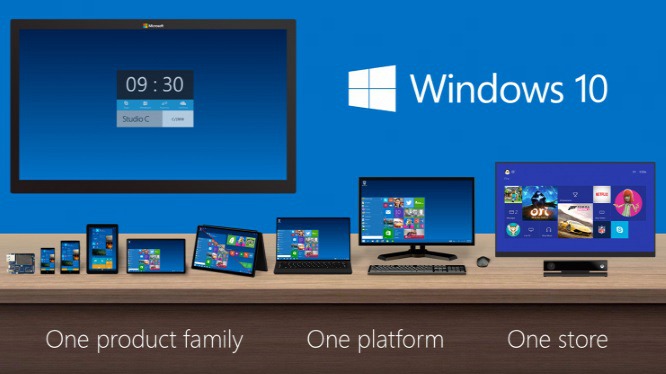Update from the guest writer, 29th October:
_______
I previously published an article that was factually incorrect. In the article (see in its original form below), I stated that Steve Jobs had stolen the idea for a Graphical Interface for the first Mac from Bill Gates but this is incorrect.
The company that originally launched a graphical interface was Xerox and as alluded to by Bill Gates in a debate with Steve Jobs, both Apple and Microsoft had “borrowed” the concept of a graphical interface from neighbour Xerox. Gates is believed to have said:
"Well, Steve, I think there's more than one way of looking at it. I think it's more like we both had this rich neighbor named Xerox and I broke into his house to steal the TV set and found out that you had already stolen it."
Furthermore, I also stated that Microsoft has stolen a head start of at least two years on Apple with the introduction of the unified Windows 10 platform. This timescale is an assumption on my behalf and was reached on the basis that the Apple has introduced similarities between iOS and OS X over the past two generations, including Continuity in OS X Yosemite, but there are significant differences (including the closed methodology on iOS) which hinder the prospects of a unified platform in the next two years.
Lastly, the topic of the original post still applies - after losing out to Apple in the original graphical interface battle, Bill Gates has evened the scoreboard by pipping Apple to the launch of an unified platform.
_______
Over to Nirave:
Technology rivals airing their differences in the public arena is a common occurrence in the market today as companies battle for patent supremacy, but some of these cases are more than just a court case; they are based on long running rivalries between the companies involved. Take Apple and Microsoft for an example - the differences between these two stem back to the 1980s, where Apple Co-Founder Steve Jobs and Microsoft CEO Bill Gates locked horns.
Back then, Gates accused Jobs of stealing Microsoft secrets when the latter launched the first Mac, with a graphical interface, whilst being employed by Gates to develop the same for Microsoft. The result of Jobs’ involvement was that Apple stole a year’s headstart on a shift in design that impacts every device we use today. Fast forward several decades and current Microsoft CEO Satya Nadella might have just done Gates, now Founder & Technology Advisor at Microsoft, a personal favour.
For the past few versions, Apple’s OS X platform has arguably headed closer towards a unification with iOS, which powers the iPad, iPod and iPhone. In the latest version, features such as Notification Centre and interface effects such as a translucent dock and status bars first arrived on iOS. Apple has long been expected to make OS X as touch-friendly as possible whilst bringing more advanced features into iOS and the apparent direction of a new unified platform has been touched on by many of the industry’s finest.
In Windows 10, Nadella and his team have pipped Apple by at least two years by introducing a single platform capable of adapting to multiple screen sizes, and the benefits are there to be reaped by the Redmond-based team. Windows 10 will offer the Metro (aka Windows Phone) interface for mobile devices, the desktop view for PCs and will allow tablet OEMs to offer either (or both) of the interfaces on their tablet portfolio. For Microsoft, the unified platform will fix one key reservation many have had of Windows - the app gap.
Currently, developers often have to package three separate apps (Windows Phone, Windows RT and Windows 8) to cover the range of Microsoft devices, but combining these into one app will encourage more developers and increase the potential market size. Instead of Windows Phone offering (per quarter) 10 million new users, Windows RT, a million and Windows 8, 15 million (all numbers are rough estimates), the unified app has a much larger potential market of 20+ million.
Whilst Microsoft is offering a single platform, Apple continues to support two platforms. Although it has introduced Continuity with Handoff which allows you to switch devices and pick up where you left off, iOS still doesn’t have the capabilities of OS X. As a Mac user, I would love to have a single platform between my iPhone 6 (my second device) and my Mac and whilst there are many similarities, there are enough differences for me to love OS X but dislike iOS.

Apple are seemingly two to three years (at best) away from offering a truly unified platform but come next spring - presumably the new platform will launch at Build at the beginning of April 2015 - Microsoft will be there. Whether the strategy will work for them is another topic but for now, Gates can crack a rare smile for a moral victory.
______________
Comments welcome, and go easy on Nirave, it's his first article ever for AAWP...!
